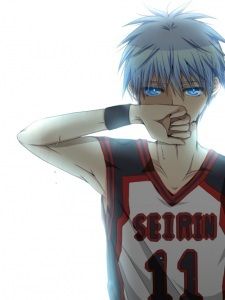Dec 11, 2023
Spoiler-free Review!
Released on the turn of the century, Boogiepop wa Warawanai is nowadays an often forgotten part of the Madhouse catalogue, in favor of its more recent remake. Nonetheless, its characters, story, art direction and world building make for an interesting watch, despite some more average elements and awkward sound design decisions.
Characters: 8
The characters in Boogiepop wa Warawanai feel incredibly real and distinct, making them arguably its strongest suit. Rather than using the flashy age-old trope of multicolored hair to distinguish them, it instead uses careful and subtle characterization to give them clear ideals and to make the viewer sympathize with all of them, even
...
those which would usually be pictured as ''the root of all evil'' due to their actions. The two leads of episode 4 are perhaps the best example of this, with both sides potentially feeling painfully relatable to a chunk of the audience. The only way that this could realistically be improved is through a bit more bravado in the character designs, as they do have an unfortunate tendency to look same-y as the show progresses.
Story: 7
Boogiepop wa Warawanai makes the interesting narrative choice of using an hybrid of episodic and continuous storytelling. Indeed, while each episode presents a different standalone case, which always link to the paranormal in one way or another, some subtle elements link them into a somewhat cohesive storyline, with an order that differs from the airing order. Overall, the storytelling is definitely one of this show's most interesting aspects, but it unfortunately suffers from the same problem as many other episodic anime, where some episodes build tension and interest in the viewer but a few are a complete snoozefest.
Art Direction: 7
As is pretty much synonymous to the Avant-Garde genre at this point, Boogiepop wa Warawanai uses extensive visual symbolism to vehiculate its themes. Some of it does tend to be quite generic, hence the rating not being a 10 for this, but it shines in its creative use of insects to illustrate crimes and illnesses, being both tactful and resourceful when referencing such trigger-inducing subjects as victim blaming. Finally for this section, some might be quick to point out the rather dull color palette that is used throughout the show, but it is actually a reasonable choice to contribute to the general atmosphere the staff behind this work was hoping for.
World Building: 7
Boogiepop wa Warawanai walks on a tightrope the whole way through when it comes to its world building, constantly introducing new supernatural elements through individuals that seemingly have nothing to do with each other. Luckily, aside from a few hiccups that can be easily brushed over, it sticks the landing pretty seemlessly, if only with the caveat that it overuses the same character to justify it a bit too often.
Animation: 5
Soundtrack: 5
Voice Acting: 5
These aspects of the show are average and fall in line with most anime out there. As such, there is very little of interest to say here.
Sound Design: 3
The only true downside of the show. The use of strident and metallic sounds to introduce new scenes, while it was daring to say the least, serves no real purpose and is simply an annoyance when trying to watch this show. This, alongside an overall laziness when it comes to auditive symbolism, leads to a very unfortunate listening (as in relating to the ears, not watching) experience.
Enjoyment: 6
Overall, while enjoyment is obviously subjective, this reviewer had fun with the anime, rating it a 6/10.
Overall score: 61/100
Score without factoring in enjoyment: 49/80
Reviewer’s Rating: 6
What did you think of this review?
Nice
 0
0
Love it
 0
0
Funny
 0
0
Confusing
 0
0
Well-written
 0
0
Creative
 0
0Show all
